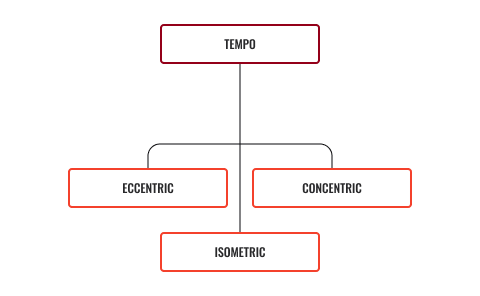In this topic, we focus on the layout and design of exercise programs. You will learn about:
- Essential program components
- Program monitoring and re-evaluation
- Program layout options
Terminology and vocabulary reference guide
As an allied health professional, you need to be familiar with terms associated with basic exercise principles and use the terms correctly (and confidently) with clients, your colleagues, and other allied health professionals. You will be introduced to many terms and definitions. Add any unfamiliar terms to your own vocabulary reference guide.
Activities
There are activities throughout the topic and an end of the topic automated quiz. These are not part of your assessment but will provide practical experience that will help you in your work and help you prepare for your formal assessment.

Once all the essential information for effective program design such as goals, medical history and fitness levels has been gathered, it is time to start pulling it all together and begin building a comprehensive and educational program.
The following list illustrates the essential information which should be included in a client’s program.
- Name: clients name so it is possible for both you and your client to find their own program (sometimes you may keep the clients' program, sometimes it is stored in a drawer in the gym for all clients so it must be easily identifiable)
- Goals: list the client’s goals on their program, a frequent reminder will help to keep them focused and on track
- Exercise choice: may sound obvious but the program should include a clear name (and maybe a brief description) of the exercises selected for the duration of the program
- Exercise order: exercises should be written on the program in the order (or grouping) they are to be performed
- Number or reps: how many times the client is required to perform each movement, this should be clearly marked on the program
- Intensity/RPE: the program should clearly indicate how hard the client is to work during each exercise in order to successfully meet their goals, this could be marked as per the RPE (rate of perceived exhaustion) scale, or for example, a number representing a speed on a cardiovascular machine
- Number of sets: record how many times/ rounds the client is to perform each exercise, this may be written as a single number or as a range
- Rest intervals: a well-designed program should also indicate how much of a rest period is required between sets, this is usually denoted in seconds or minutes
- Tempo: This is an important tool as it can ensure the safe and effective development of the specific motor patterns required to perform the movement correctly. As resistance-based exercises are composed of concentric, eccentric movement, pause phases, tempo (time under tension) reflects the rate or pace at which an exercise is to be performed. Determining tempo can also aid calculating how long an exercise or a rep will take and therefor lending to calculating the length of a program as a whole, helping to establish and ensure a 45 minute program, for example, actually takes 45 minutes to complete.
- Load: refers to the amount of weight that the client is lifting for that particular exercise. The load should be continually improving with progression and adapted as the client progressively overloads. Training load should be monitored to prevent any injuries and to monitor achievement.
How is tempo displayed? Tempo is typically comprised of three numbers in the following order:

Let us look at tempo and how this relates to the three types of muscle contractions:
Eccentric: this sees the muscle elongating under tension, i.e., the downward phase of a squat
Isometric: this is where the muscle length does not change under tension, i.e., the pause phase of a squat (whilst in the seated position) or a plank hold
Concentric: where the muscle shortens whilst generating a larger force than the one which has been applied (overcoming the weight/tension), i.e., the standing/rising portion of a squat.
This is then displayed in a numerical format such as 3:1:3. Using the squat movement as an example, this would imply the client is to lower the body from the standing position and reach the seated position of a squat in three seconds, no more no less. Giving a timeframe to perform the exercise allows for a few key stages to occur:
- The client is more body aware and has time to think about their movement pattern
- The body has time to be aware of what it is doing and compute the movement pattern it is performing, allowing memory recall once movement pattern is embedded
- The exercise professional has time to view technique and make adjustments where necessary
- A designated speed at which the movement is to be performed allows for time to control movement and perfect technique, along with controlling safety, as the movement is performed at a pace at which the client can safely maintain.
The second number within tempo typically reflects the isometric phase or the pause phase, depending on the type of exercise being performed. In the above scenario of 3:1:3, the middle number here represents how long the seated position of the squat movement is to be held for, in this case, this would be one second.
The third and final number represents how long the concentric (muscle shortening) movement should occur for. In regard to the exercise, the number three indicates that the client is required to take three seconds, again, no more no less, in order to return from the seated squat position back to standing.
Important - any well-designed program, once explained to a client, should be able to be picked up by anyone and performed safely. This means that each program should be clear, well written and leave no confusion about how and when to perform each movement, keep this in mind when writing a program. Consider, a trainer within the gym is absent and you have been asked to take their client for a session, if you were to pick up a program which has been marked up, written in any order and is missing information, it would be nearly impossible to replicate the program the way the trainer would, compromising both the goals and the safety of the client. Additionally, clients will be expected to perform their work out on days when they are not training with you, therefore, it is essential that this program is clear and promotes safety. There is no point in just being safe when they are working with you, they should be able to be safe at all times. This will largely come down to a combination of your verbal delivery and visual demonstrations of exercise as well as a clear and well-written program.

A health and fitness professional will typically write thousands of programs in their lifetime and perform just as many program re-evaluations, why? Self-improvement.
Guaranteed, any program which has been well designed behind the scenes, ready and waiting for the client to walk in and begin their first session, will likely not run 100% to plan. This could be for a multitude of reasons that may include the following.
- The client is late
- The client is tired
- The client slept funny and has a sore neck/back
- The client didn’t sleep well due to stress and is feeling tired
- The machine you wish to use is taken by another member
- The client is feeling unwell, and many other reasons which cannot always be controlled.
A large part of the trainers role is to be prepared. To continue delivering amazing sessions to clients, it is important to monitor and evaluate the program and the services given to the client both during and after each session. An example of this may include, seeking verbal feedback from the client through these stages. Click on each of the following for examples of questions you may ask yourself before, during and between/after sessions.
- Is the prescribed program at the correct level for the client?
- What will the plan be if someone is using the equipment required, what is the back-up plan?
- Is the client performing the exercises correctly? If the client is struggling it is the responsibility of the trainer to find an alternative ways to communicate the requirements. For instance, adjusting language, visual demonstration and so on.
- Is my verbal delivery suitable for the client, do I need to rephrase my wording?
- Did the session run as planned, or did it require any program adjustments?
- Did anything happen within the session which I was not expecting/prepared for?
- Did I have enough alternative exercises prepared to ensure the session remained smooth in the event of other people using the equipment which was required or the inability of the client to perform the planned exercise efficiently and safely?
- Was my verbal delivery correctly pitched for the client?
- Could my demonstrations be tweaked in future to better support clients?
- Was the program clear, did the client understand what exercises were to be performed and how to perform them?
Self-evaluation versus client feedback
Program monitoring and re-evaluation can and should be performed through self-evaluation and client feedback. Self-evaluation is not commonly practised within the industry, why would an awesome program need to be self-evaluated? For the reasons above, that is why! Any professional trainer worth their salt would want to continuously improve by reflecting on what they can control within a session. Another extremely effective way to ensure a smooth session and program design is to seek feedback from the client. This can be obtained by watching them perform the exercises and gauging their RPE and listening to their verbal feedback. It can also be further obtained by asking them after the session, what they felt worked well and what they feel could work better? There is no pride lost in asking for feedback, in fact, both trust and respect is gained by asking for further information to ensure they have a safe and effective experience, this type of professional conduct will be what sets you above the rest, creating a fabulous example for the industry.
Within the health and fitness industry, there is a myriad of different program designs. Big bright and beautiful designs to clean, tidy and simply designed programs. Find out what works well for both you and your client. If you are working within a gym facility, they may ask you to write programs with the template they have selected, or you may have free reign. When it comes to the design, there are a few different options, some of which are displayed below, however, the key of a well-designed program is that:
- it contains all of the essential components
- it can be easily performed by the client or another trainer in your absence.
In this topic, we focused on the layout and design of exercise programs. You learnt about:
- Essential program components
- Program monitoring and re-evaluation
- Program layout options

